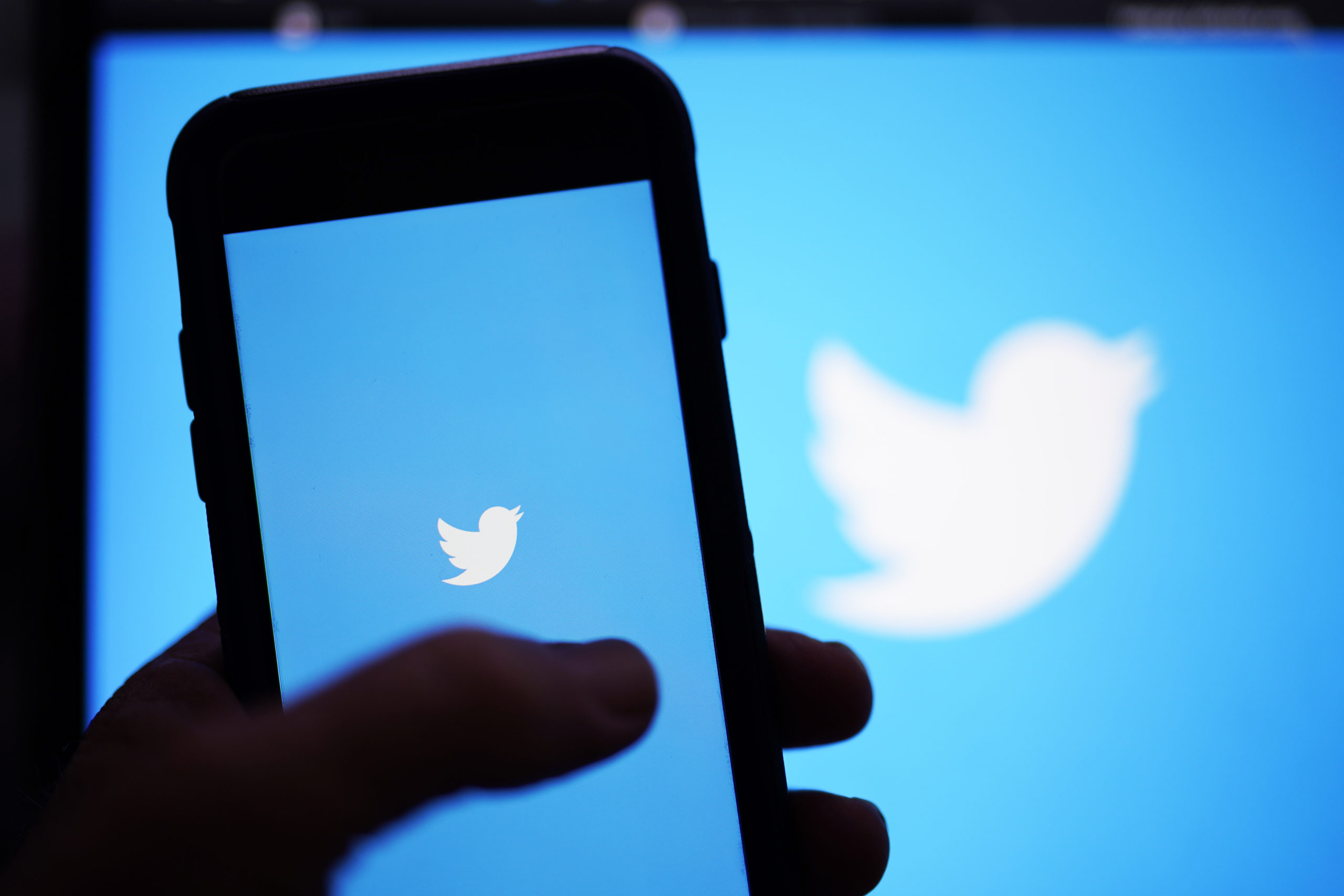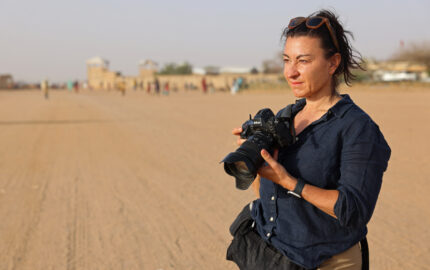Journalists face physical dangers when they are out on the field. But they are also increasingly dealing with trolling, doxing, and death threats online — especially women and journalists of color.
Online harassment can undermine journalists’ ability to do their work and lead to self-censorship. And, it can contribute to the departure of early-career women journalists at a time when news organizations are trying to diversify their staffs, says Elisa Lees Muñoz, executive director of the International Women’s Media Foundation (IWMF), a nonprofit dedicated to helping female journalists overcome obstacles in their careers.
The IWMF recently released a guide for newsroom management looking to implement support and protection for journalists experiencing online abuse. The guide provides step-by-step instructions on how newsrooms can raise awareness, secure social accounts, and develop policies to keep journalists safe online. It also includes templates to help managers create policies to deal with escalating threats and craft statements of support for staff members.
Muñoz talked with Nieman Reports about the landscape of online abuse and about how media organizations can utilize IWMF’s safety guide to combat online harassment. Below are edited and condensed excerpts of that conversation:
What does the current landscape of online abuse look like in newsrooms you’ve surveyed? Are you finding patterns as to whom it's affecting the most?
The guide is based on experiences we have had with newsrooms that we have offered training to. Every organization was different, and the only thing that really made them alike was the kinds of abuse that they were facing. The way that journalists experience online violence is very similar because it's such a common practice. And it's usually in response to a story that's been published.
Individuals who receive this harassment are mostly women and women of color. There's a very clear misogynistic and racist overtone to the harassment that is received and to the people who are usually the targets of that harassment.
How is this a press freedom issue?
We think it's one of the most pernicious attacks on press freedom because it is really changing the industry and the way that journalists approach journalism. We hear anecdotally over and over again about the kinds of self-censorship that journalists are taking on consciously as well as subconsciously, deciding to maybe alter the tone of [their] reporting, or more likely, not to take on a story at all, when they know that it's going to lead to serious online backlash.
That is one of the many reasons we think it is a press freedom issue because it is actually stopping the reporting on some issues, and [these issues] stopped being reported by a very specific group of people.
Small newsrooms may lack substantial HR, legal, and IT resources that help combat online harassment. What are a few key things they can do to support their staff if they become a target of abuse?
Not all of the [steps in the guide] require an HR department or an IT person. Some steps are as simple as getting everybody on your staff a paid subscription to a software program called DeleteMe, which removes the individual's personal information from online public access.
Another very simple action that does not require any high level of staff is that if and when your reporter is attacked publicly online, to simply issue a statement of support on behalf of that individual. Oftentimes, the individual is left to defend themselves online, which is not advisable. These expressions of support are meaningful to the career and reputation of the journalist that's been attacked.
What steps can individual journalists take to protect themselves?
We are very cognizant that this guidebook was developed for media organizations. The majority of the journalists that the IWMF works with on a regular basis are freelancers. We have formed a coalition against online violence that has created an online violence response hub, which has countless resources that outlines what individual journalists can do from digital hygiene — cleaning up their social media so that it is not revealing anything private about them or their families — to getting a subscription to DeleteMe or other software that will do similar thing, [and] to developing their own risk assessments.
[In newsrooms], it kind of goes without saying that you're going to talk about the physical dangers when you go out and report. But that does not happen around the issue of digital violence. One of the things that we are really promoting is for journalists to approach online violence similarly to physical violence. ‘What are you writing about? What is the likely fallout for that? Who might be targeting you?’
The guide mentions a hope to change the “culture of silence” associated with online attacks. Can you elaborate on this “culture of silence,” how it can impact journalists’ work, and how this guide specifically can help change that culture?
What we have seen and heard is that there's a reluctance to report when you have been the target of online violence. Sometimes it's sheer embarrassment of what is being said about you online and other times it's the fear of being taken off the beat, the fear that it won't be taken seriously or that you're just not tough enough to be on that story, of being told to get offline for a few weeks, which as we know, is pretty much impossible for journalists.
What has also been reported to us is the feeling that there's nothing that can be done about it, that there's nothing that your newsroom can do to support you, which we believe entirely to be false.
We feel that addressing this issue from a policy perspective and making it as easy as possible for editors and managers to implement these simple measures sends a signal that it is not acceptable that journalists — especially women and women of color — have to live with this kind of abuse day in and day out, and that media organizations recognize that this is not an acceptable way to have to carry out your profession.
What percentage of newsrooms, at least among the ones you’ve surveyed, have appropriate guides or measures already in place to protect their journalists online?
We're working with a very self-selected group of organizations that have recognized that this is a problem and that want to do something about it. It's our belief that across the country, especially in smaller newsrooms, there is probably very little action being taken to address the high levels of online abuse that is taking place.
Most likely it has to do with the size of the newsroom, with the resources that are available, with the lack of information about the resources that are available for free, with [working in] a 24-hour news cycle. We hear a lot of “We can barely keep up with the work. How are we going to add this to our plate?”
We are addressing this from the perspective of and we very consciously call it “online violence” because the consequences to journalists are real. They're not virtual. The symptoms that journalists who are attacked constantly and at a high level have are very similar to PTSD. And, these kinds of policies should be accompanied with plans to address the trauma and the toll that comes with being attacked online.
As technology advances, how do you see online harassment evolving? Do you see any trends that threaten to significantly worsen online harassment?
It is just tremendously worrying that the technology does always seem to be one step ahead of the solution, right? What we are thinking about right now is the intersection of online violence and online attacks and disinformation, where those two come together, and then how to address that. Because the scope of the problem is so enormous, we're trying to address it from this very practical approach. But we do think that it's going to get worse. We think that the physical security for journalists is going to get worse as the election cycle heightens. And certainly, that's going to be accompanied by increased attacks and harassment online.
What else should people know about online harassment?
There is this public perception that online attacks and online violence is part and parcel of being on social media, that it is an organic response and that it is a mob. And I really want to reiterate that that is not the case. Almost always these attacks are orchestrated, planned, and fomented by very specific groups and interests that have a political agenda or a social agenda, and that they support each other and contribute to what seems like an organic process. That is what makes it so hard to respond to.
There is a real duty for media organizations to stand behind their journalists because they are not responding to one individual. It is an orchestrated attack, and it requires an organization to be behind and [support] that individual that's been attacked. That's really the distinction to us — the need for every journalist, if they [are part of] a media organization, to be backed 100 percent by the organization.



